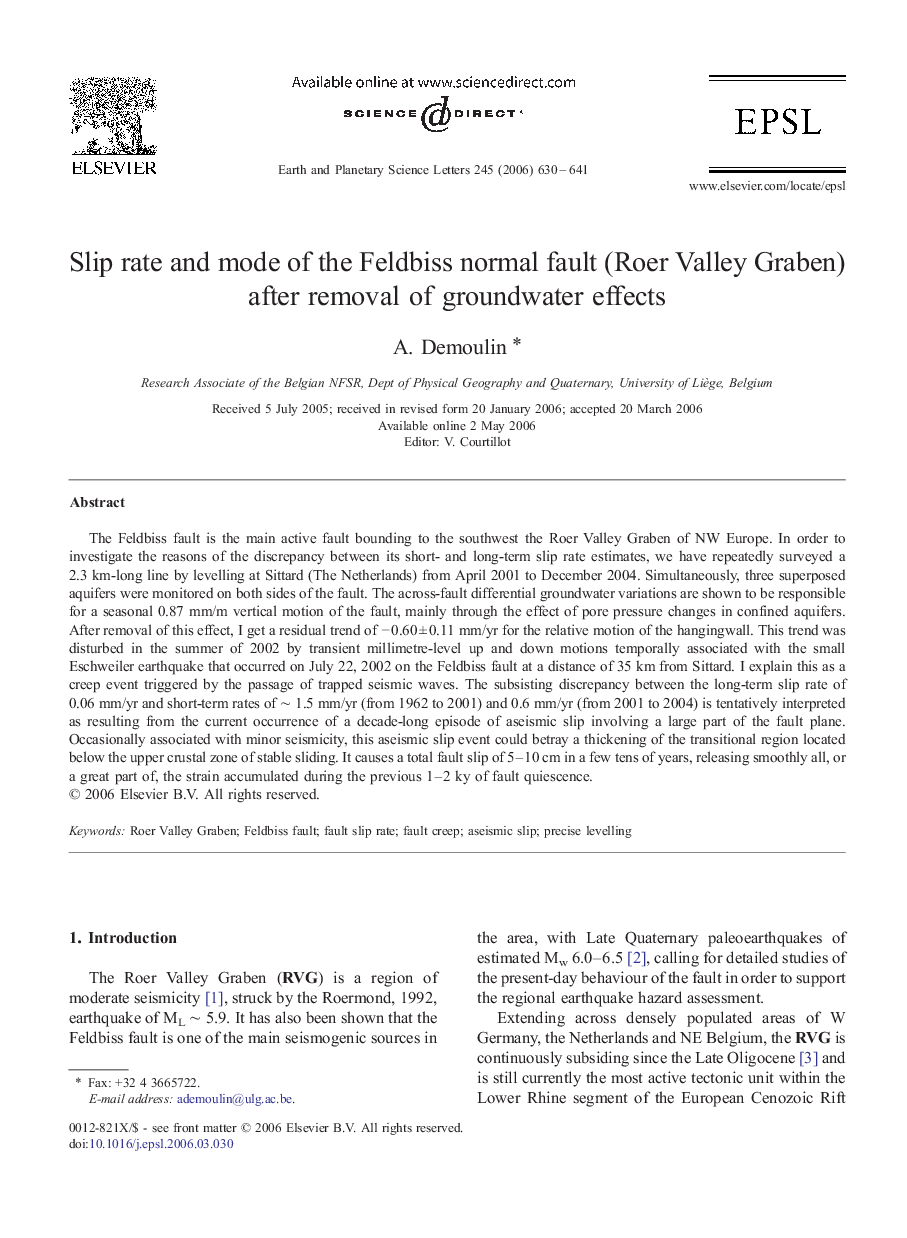| Article ID | Journal | Published Year | Pages | File Type |
|---|---|---|---|---|
| 6431158 | Earth and Planetary Science Letters | 2006 | 12 Pages |
The Feldbiss fault is the main active fault bounding to the southwest the Roer Valley Graben of NW Europe. In order to investigate the reasons of the discrepancy between its short- and long-term slip rate estimates, we have repeatedly surveyed a 2.3 km-long line by levelling at Sittard (The Netherlands) from April 2001 to December 2004. Simultaneously, three superposed aquifers were monitored on both sides of the fault. The across-fault differential groundwater variations are shown to be responsible for a seasonal 0.87 mm/m vertical motion of the fault, mainly through the effect of pore pressure changes in confined aquifers. After removal of this effect, I get a residual trend of â 0.60 ± 0.11 mm/yr for the relative motion of the hangingwall. This trend was disturbed in the summer of 2002 by transient millimetre-level up and down motions temporally associated with the small Eschweiler earthquake that occurred on July 22, 2002 on the Feldbiss fault at a distance of 35 km from Sittard. I explain this as a creep event triggered by the passage of trapped seismic waves. The subsisting discrepancy between the long-term slip rate of 0.06 mm/yr and short-term rates of â¼Â 1.5 mm/yr (from 1962 to 2001) and 0.6 mm/yr (from 2001 to 2004) is tentatively interpreted as resulting from the current occurrence of a decade-long episode of aseismic slip involving a large part of the fault plane. Occasionally associated with minor seismicity, this aseismic slip event could betray a thickening of the transitional region located below the upper crustal zone of stable sliding. It causes a total fault slip of 5-10 cm in a few tens of years, releasing smoothly all, or a great part of, the strain accumulated during the previous 1-2 ky of fault quiescence.
